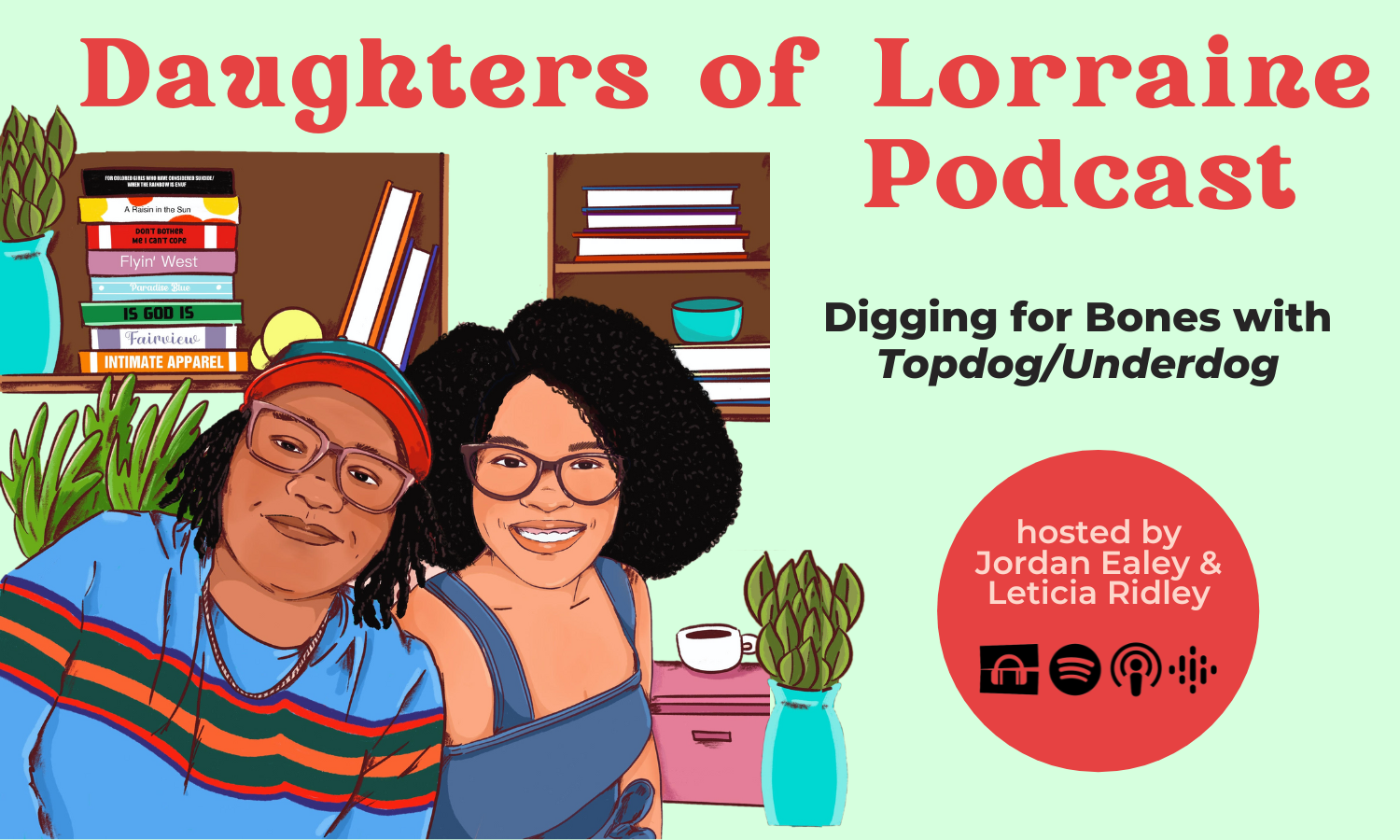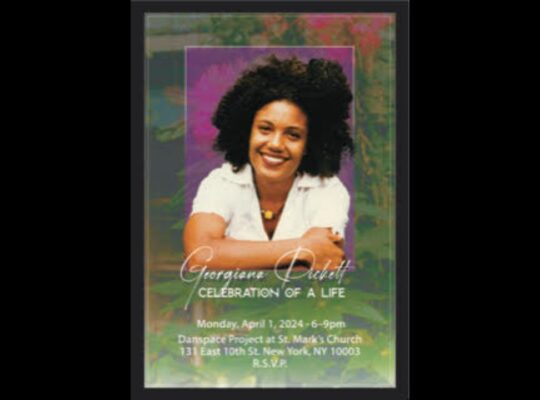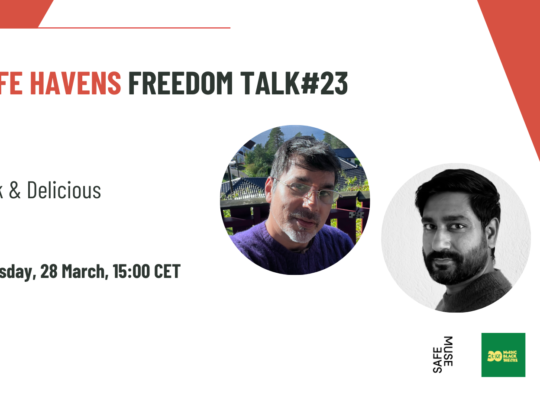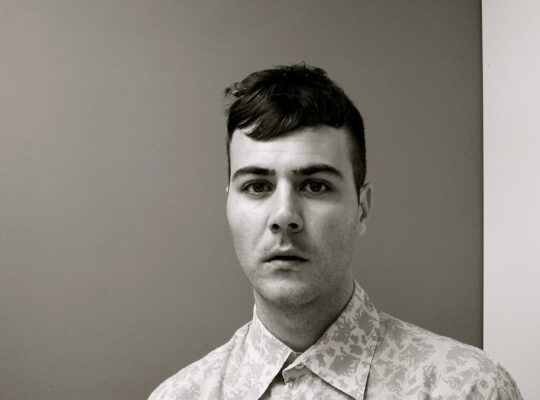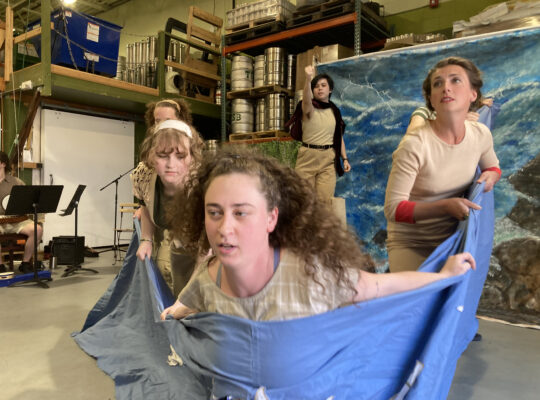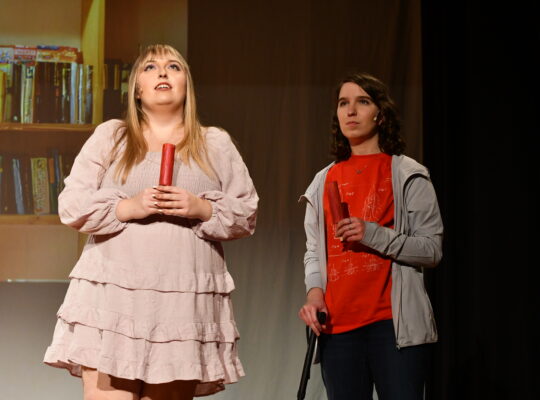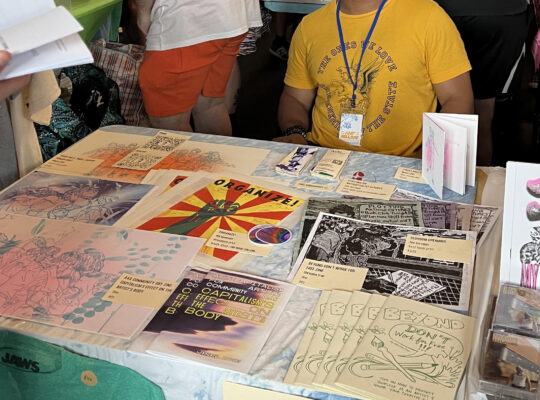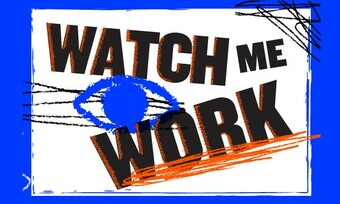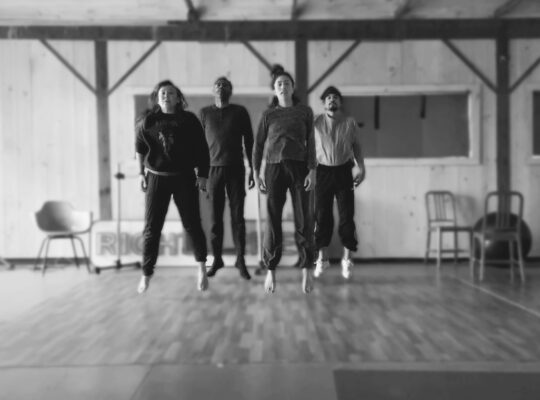Leticia Ridley: Welcome to Daughters of Lorraine, a podcast from your friendly neighborhood Black feminists exploring the legacies, present, and futures of Black theatre. We are your hosts, Leticia Ridley—
Jordan Ealey: And Jordan Ealey. On this podcast, produced for HowlRound Theatre Commons—a free and open platform for theatremakers worldwide—we discuss Black theatre history; conduct interviews with local and national Black theatre artists, scholars and practitioners; and discuss plays by Black playwrights that have our minds buzzing.
Leticia: On July 26, 2001, Topdog/Underdog by Suzan-Lori Parks premiered the Public Theater, directed by theatre luminary, George C. Wolfe, and starring Jeffrey Wright and Don Cheadle. The play was a critical hit. Topdog/Underdog received multiple awards and recognition, including the 2002 Pulitzer Prize for Drama, making Parks the first Black woman to receive the honor.
Jordan: In 2022, the play enjoyed a revival on Broadway with direction by Kenny Leon and starring Corey Hawkins and Yahya Abdul-Mateen. The revival was awarded the Tony Award for Best Revival of a Play. Just a few weeks ago, we had the absolute pleasure of watching Canadian Stage’s production of Topdog/Underdog in Toronto, Canada. As themes of Black masculinity, difficult family dynamics and working-class themes still hold relevance for today’s world, We delve into how Parks’s play, over twenty years later, beautifully captures and sustains our contemporary attention.
Jordan: All right, we are back, we are back. What is this now? Episode five of our fourth season? We’re really just getting through them.
Leticia: I like to think of not getting through them but as engaging in deep dialogue on something that we both love, which is Black theatre.
Jordan: Of course, of course. Totally not what I meant.
Leticia: Is it that time of the semester?
Jordan: It’s that time of semester. I think, in particular, my students are pretty burnt out and tired. They’re just coming off of midterms, and everyone’s trudging along until the next break. So, how are you doing, Leticia?
Leticia: I’m doing well. It’s starting to get a little chilly in Toronto. Oh, sorry. The Canadians told me that you should not pronounce the second “T” in Toronto or it makes you look like you’re a foreigner. So, I have to learn how to say “Toronto,” and not “Toronto.”
Jordan: But it’s going well. Yeah, I find kinship with them in that, same way with Atlanta. You say “Atlanta,” not “Atlanta.”
Leticia: Fair enough. Fair enough. But I’m excited to be here today to discuss with you someone shockingly we had not discussed on the podcast, even though we may have mentioned some of their plays. I don’t know if we’ve talked about them in any extensive capacity in any of our previous episodes, but once you hear this name, you’re going to be like, “Of course. You would have an episode dedicated to this particular figure.”
Jordan: And that person is Suzan-Lori Parks. We have discussed Suzan-Lori Parks very briefly, or we spent just a little bit of engagement with her work on our episode on content and form and how we thought about the form of Black theatre, I think, but we didn’t necessarily delve, do a deep dive into one of her works, which it’s about that time. It is definitely about that time that we did that.
Leticia: Right. And Suzan-Lori Parks is someone who is formidable within Black theatre circles. She’s been around the block a while now. She’s been in Black theatre circles for a very long time. And I just imagined, or I’m just rethinking of when I first encountered her work as an undergrad at UCSD [University of California San Diego] in a playwriting class where I was hungry for reading more Black playwrights. I think I said this on the podcast before, but I was not a theatre major, so my interest in theatre was tangential to my major, and I just did it because I loved it.
And in this playwriting class, I went up to my playwriting professor, Jennifer Barclay, and I said, “Hey, I want to read more Black playwrights. Where do I go?” And she provided me [with] a whole list of Black plays and Black playwrights I could read, but the first play she sent me was Suzan-Lori Parks’s In the Blood. And I was mesmerized by the writing, the content, and just the experimentation in which Suzan-Lori Parks was interested in putting on the page and the stage for us.
Jordan: My first encounter with Suzan-Lori Parks’ work, I also think it was an undergraduate experience. I think I went to performing arts high school and I took drama classes. One of my concentrations when I was there was drama. My teacher had given us a list of playwrights to know, and Suzan-Lori Parks was on it, but I did not actually read her work until I was in college.
I don’t know if I’ve ever mentioned this on the podcast, but I went to a women’s college in Macon, Georgia called Wesleyan College, not being confused with Wesleyan University, because everyone’s always like, “Oh, Lin-Manuel Miranda went there.” And I’m like, “So, he went to Wesleyan University in Connecticut. We couldn’t have gone to the same college because I went to a women’s college.” But I took a class called Theatre by Women, and we actually ended up reading Topdog/Underdog in that class by Suzan-Lori Parks.
And then, I read Venus in a class I took called Race, Gender, and Performance later on in my college career. And so, I became really interested in Suzan-Lori Parks’s work. And I actually, I don’t know if you even know this, Leticia. You might know this, but one of my senior thesis projects was on Suzan-Lori Parks. I wrote about Imperceptible Mutabilities in the Third Kingdom, which is my favorite Suzan-Lori Parks play.
Even though it’s really weird, it’s her first majorly produced play and everything, but I wrote my undergrad theatre thesis on that play. And that was my writing sample to apply to grad school.
Leticia: So, it was your moneymaker to get you into grad school?
Jordan: One might say that.
Leticia: Thank you, Suzan-Lori Parks.
Because [Suzan-Lori Parks’s] plays, her analysis, is a form of Black feminist historiography. It’s not just that we have to change the content of the history that we read, but it’s about the way that we tell that history.
Jordan: Exactly. And so, it’s great. It’s interesting that she is that playwright that really got us interested in thinking of Black theatre. And then, for me, and probably the same for you, actually yes, the same for you, right? Specifically thinking about this Black women’s position within theatre, Black feminism and theatre, definitely my first foray into what is now my career as an academic.
Leticia: Right. I think about Suzan-Lori Parks, and I think about the legacy that she has provided us and that the work that she continues to produce for us and the work that we can return to. And the legend goes that the person who pushed her towards Black theatre and being a playwright was none other than James Baldwin. What a legacy to take a class with James Baldwin, and he’s reading your literature, and he says, “Hey, have you thought about theatre?”
And as we know, James Baldwin had his own space within theatre. He was writing plays, more than one. And even though he doesn’t necessarily get taken up in that capacity in the same way that he does with his literature, I think it’s important that James Baldwin was the one to usher Suzan-Lori Parks in the direction of theatre.
Jordan: Absolutely. I mean, like you said, that is an iconic connection that is made. And if James Baldwin told me to write plays, I’m picking up the pen immediately and doing so. And it was really right, the attention to the way that she was focused on embodiment within her, I believe it was a poetry class or a fiction [class], I can’t even remember which one it necessarily was, but his thing was like, “This needs to be activated.”
And it was part of also the way she would read her work in the classes is he saw a different dimension to the way that her work could play outside of the page. And I think that that is crucial, I think, to the way that we understand Suzan-Lori Parks’s work and the way she also understands her own work. Mount Holyoke, which is also a fellow women’s college, I always feel a connection with her because of that.
Something that is really well-known with Suzan-Lori Parks, and of course we mentioned this in our form meets content episode, but is around her dramaturgical structure in her plays. Yeah?
Leticia: Yeah, I a hundred percent agree. I think as well that Suzan-Lori Parks is someone who, she’s not the first to do this, but really magnify her own ethos in writing it down for people who are experiencing her work, who are writing about her work, being quite plain about, “This is my philosophy of playwriting, this is how I write plays, this is how I think about language being a physical act, and this is a guide for you all.”
And I really appreciate that as someone who, one, has seen a few of her plays, but also as someone who is thinking about playwrights as a theorist or as someone who is theorizing about the world in which they’re existing in and living in.
I harken back to when I was in the hellscape called comprehensive exams for graduate school, and I had a question about theory and theorists, Black theorists, some question that I received from my examiners. And it was asking to be like, “Who’s your theorists that are helping you understand this idea of abstraction?” Or not even abstraction, it was fragmentation. And I actually started with Suzan-Lori Parks, and even though one of my examiners was like, “Well, she is not really a theorist…” I pushed back on that a thousand percent.
But one of the things that I really love about Suzan-Lori Parks’s philosophy and instruction about her playwriting is thinking of this idea of digging for bones and letting the bones speak, where she’s leaning into this idea of how African American history is fraught, is lost because of the way that enslavement, and other anti-Black violence has existed in the world, that there is a way that history or African American history is not documented in a way that we can get a full landscape of it.
So, she creates this… or I wouldn’t say that she creates, but she is a part of this genealogy of thinking about what theatre and specifically what plays can do to help us think through the role of playwriting and its relationship with history, specifically as it pertains to African American people.
So, she writes,
“A play is a blueprint of an event, a way of creating and rewriting history through the medium of literature. Since history is a recorded or remembered event, theatre for me is the perfect place to make history. That is, because so much of African American history has been unrecorded, dismembered, washed out. One of my tasks as a playwright is to, through literature and the special strange relationship between theatre and real life, the bones tell us what was, is, will be. And because they’re songs and a play, something that through a production actually happens, I’m working theatre like an incubator to create new historical events.”
And that’s from her essay, “Possession.”
Jordan: I think that I love all of the essays that she writes, and she really is an academic’s dream because of the way that she so clearly articulates what she’s doing with her work and the way that she interprets her own craft. But I also think, taking that a step further, is that there seems to be, within her work, a relationship between the craft of writing, the skill of playwriting, but also the political dimensions of what theatre can do that is tied to that writing. Right?
So, digging for bones and writing plays are not just these to learn the structure of how to write a play, but she’s, to me, saying that there is a politics to the way you choose to write plays. And for her, in the case of something like “Possession,” is that plays are serving as this—I don’t want to say corrective because that feels too overdetermined—but an extension of African American history and culture that has been lost and diluted through white supremacy and colonialism.
And I love you bringing up your earlier thinking of Suzan-Lori Parks as a theorist, right? Because her plays, her analysis, is a form of Black feminist historiography. It’s not just that we have to change the content of the history that we read, but it’s about the way that we tell that history. And theatre as a historiographic practice, I think, is also what she is arguing within ‘Possession.”
Leticia: Right. And we’ve talked about this prior. For scholars out there who might be familiar with Saidiya Hartman’s idea of critical fabulation, Suzan-Lori Parks gives us a sense of that prior to Hartman, right? And I think that that’s important when we’re thinking about the legacy of Black theatre and the importance of Black playwrights in this idea of Black theoretical frameworks in which many of us who are thinking about the intersections of Blackness and performance are often operating in. So, I do really appreciate Suzan-Lori Parks for offering us that.
And she has other essays like “An Equation for Black People on Stage,” which I worked with most recently on an article that’s coming out in Theatre History Studies—
Jordan: Whoo.
Leticia: —to think about this long-term fascination, I would argue, for Suzan-Lori Parks, with thinking about Black people on stage and racial surveillance, I think we see it in a lot of her plays. We can talk a bit about that when we get to talk about the production we’ve seen of Topdog/Underdog.
I think she’s really interested in interrogating: what does it mean that theatre is entangled with these legacies of Black surveillance but also Black performance? The way that she relates what happens in theatre to things like the auction block in slavery, of the freak show, of other formations where Blackness is surveilled and put on stage to be gawked at, to be looked at. I think she’s really interested constantly in interrogating that.
And I think a lot about, how do Black playwrights broadly think about that history and that connection between Black people being on stage to be gawked at by, quite honestly, majority white audiences most of the time? Right? How do they negotiate this form that we can all recognize does something for Black people and Black life and, in the case of Suzan-Lori Parks, Black history? But how do you actually think about how you’re dealing with a legacy that is under the surface, if not visible to everyone else who’s maybe going to see your show?
Jordan: And your comments also bring to mind the work of someone that we both really admire. Brandi Wilkins Catanese, who, in her book The Problem of The Color[blind], writes about Suzan-Lori Parks and the way she thinks about Black performance as theory. Brandi’s work really focuses on Venus in particular and uses “Equation for Black People on Stage.”
But what she says about this essay, I think, is really interesting where she… so quoting Catanese, “The playwright’s challenge is to, quote, ‘get tough’ and write literature instead of just writing a show. It should be literature, a show, and some historical document, which is what a play is. Why not do all three?” And that’s Suzan-Lori Parks.
And then, Catanese adds, “Parks’s own plays intervene into and augment aesthetics, practices of spectatorship, historical narratives, and other tactfully generated forms of subjectivity. Through the coalescence of these practices in a single performance text or performance event, Parks rejects the compression Blackness usually receives in literature history and performance.”
To me, what Catanese’s text is right. So, you’re talking about the spectator, the active looking, the active watching. Parks is really concerned with how these spectatorial practices show up in the theatre, whether it’s through the actual narrative itself, in the case of Venus, where you have all these people who watch, or even In the Blood—which I also believe we’ve talked about in a reproductive justice episode—is around how folks are watching and surveilling Black people, but then also on a larger scale, how the audience is indicted within this.
So, in the case of Venus, how “please visit,” which is what Venus says in that, or the ways that the actual person, Saartjie Baartman was paraded around Europe and the legacy that has held for Black fem[me] bodies ever since. And so, those practices of looking, I think, are really integral to her narrative, but also the way that performance gets taken up.
And then, I just want to point people out, too, to one of my personal favorite essays of Suzan-Lori Parks, which is called “The Rear End of History,” where she uses Josephine Baker to think about this graphic narratives of Black people. So, she really focuses on how something like the butt, Baker’s legacy as someone who did the dance, the Black bottom, and who had this fascination with her body, how focusing on this fragmentation of African American women’s history and narratives has material implications for the way that we write and understand Black people.
It’s a really amazing essay, but I really think it’s most salient for thinking about this point around theatricality and performativity and how Suzan-Lori Parks, as she says, language of the physical act, how she actually physicalizes dramaturgy within her work, both on the page and, as we’re going to talk about today, on stage.
Leticia: Right. And I think the essays are one way to enter into Suzan-Lori Parks and to understand how she’s thinking through what playwriting can do and what playwright can do for history and theatre itself. I think it’s really important that she’s constantly thinking about theatre as both literature and performance constantly in tangent with another.
I know that may not be the case for folks who primarily might be in English or even theatre people who may only be concerned with the actual production or performance of it. I think that she gives us great language to think about the both ends of theatre and what makes it this place where we can interrogate it on so many different levels. And I think we see this through her actual topography that she gives us in her play.
So, if you pick up a Suzan-Lori Parks play, you’re probably going to see something at the beginning of the play, a sense of an author’s note of what you might encounter as far as stage directions or style of the text. And these are instructions that I really appreciate, because I think that she is really thinking about the utility of other forms of embodiment that doesn’t require dialogue.
So, for example, she has this idea of a rest, and on the page it’s rest in parentheses. And how she describes this is that at this moment, that she should take a little time, a pause, a breather, make a transition. And what I love about this idea of the rest is, if I’m getting into my philosophical Black Studies brain, I’m like, “Ah, what does it mean that you’re putting these Black people on stage and these performers on stage, and you’re giving them permission to rest during this performance where people are watching you, that you can perhaps take a moment?”
I don’t know, there’s just something that’s really potent to me about that, but that’s just me being in my philosophical Black studies brain, maybe it’s because I’m in the throes of research right now.
You need to understand the genealogy of thoughts and ideas that led her to this typography and dramaturgy that she has in the play. And so, I think it just requires you to do really deep engagement with a Black woman’s work, which is I’m always a fan of.
Jordan: No, that’s a really great point like, oh, my God, that’s so good, Leticia. oh, that’s so good. You heard it here first, folks. But yeah, the idea that they’re doing all this heavy-lifting, storytelling, history-making, but it’s also just like, but you have the permission to stop and transition as needed. I think it’s really great. And I also think that is in tandem with her other respite that she gives in the “spell,” which is described as “the elongated and heightened rest.”
In the script, if you are familiar with the Suzan-Lori Parks script, sometimes you’ll just see character names just listed on top of each other for sometimes it’s just four times, sometimes it’s a whole page, two pages. And she described this as where the figures experience their pure, simple state. While no action or stage business is necessary, directors should fill this moment as they see fit.
And I also want to say I had the opportunity to teach Suzan-Lori Parks’s work in a dramaturgy intensive recently, and someone pointed out that this is also a very collaborative method of theatre-making that Suzan-Lori Parks gives, too, where it’s like she’s not telling you exactly what to do, but she’s giving people space to be like, “What could this moment look like for the actors, for the directors, for the design of the moment?”
And it gives other collaborators space to envision, to put their own spin on what the characters are experiencing in the script. And I also think, alongside that, even as it’s very collaborative, it also reminds, in my opinion. And we can talk about whether or not this comes through in performance, that she, as a Black woman, authored this text too. So, there’s a way that you have to…
If you are on a stage in a Suzan-Lori Parks’s play, she has to be in the room with you because you need to know what those rests are and those spells mean. You need to understand the genealogy of thoughts and ideas that led her to this typography and dramaturgy that she has in the play. And so, I think it just requires you to do really deep engagement with a Black woman’s work, which is I’m always a fan of.
Leticia: Right. No, right. Exactly. What’s really fascinating about this is that I read Suzan-Lori Parks before I got to see any of her work staged. I think what is really interesting about it is that it hits different when you read it, right? Because you as a reader are imagining what those rests can be or what that spell could be or what’s the possibility, what’s the collaborative component that’s missing in the reading.
So, again, goes back to theatre is meant to be performed. It’s meant to be staged. Even as we’re reading the script, we’re missing elements of the performance because we’re only able to read it. And I’m thinking back to the first Suzan-Lori Parks’s play that I’d seen staged, which was Venus. And I was not attuned to the way that the rest or spells were functioning because I hadn’t really did a deep dive in understanding Suzan-Lori Parks’s writing about her writing and her plays.
So, I don’t think I was attuned to it. I just thought it was a directorial choice to rest at certain times or to make things happen at certain times that weren’t in the play, which in part they were, but that it was ushered through Suzan-Lori Parks saying, “Something should happen here,” or “Something should be done here,” even if it’s just silence or rest or stillness, whatever it is.
Compared to this time, when we recently seen this production, I was really interested in trying to see if I could locate when a spell or rest happened. I could not, but I was interested in thinking through what that meant because there’s times if you look at Topdog/Underdog, the play, where in the stage directions, it might say that this takes a while or this takes a moment, which is different than when the rest or the spells show up.
So, I was interested if I could distinguish those moments, but I think that Suzan-Lori Parks just gives a director a lot to play with in actors, a lot to play with in her plays, and I think that’s why people usually love doing her work and why she’s been so successful.
Jordan: Absolutely. I mean, language is a physical act, and she shows that time and time again through her scripts, so it’s amazing. But now, that she’s brought up the production, I think we can transition into talking about this production. So, yes, the rumors are true. We did see a show together, wooh! It’s been so long since we’ve done that. Topdog/Underdog at Canadian Stage.
I believe the run has now concluded. I actually think we went on the very last day of the run. Unfortunately, the run has now concluded, but we got to see the very last performance of Canadian Stage’s production of Topdog/Underdog. Leticia, was this your first time ever seeing this play staged?
Leticia: Yes, and we talked about this immediately after, and I’m not even going to lie to you, listeners. I was a hater on Topdog/Underdog. I had read it before, but I was like, “I don’t know.” We both were. Come on. We both were.
Jordan: No, you don’t know me, Leticia.
Leticia: When we took Contemporary Black Drama together, we had to read Topdog/Underdog for that class. We were haters. We were being haters. And not haters in the sense that I was like, “This isn’t a good play.” It’s clearly a good play. Haters at the sense that I was like, “Ugh, why does this play get so much attention? How about her plays that focus on Black women? Oh, look at them, just erasing us again.”
And then, I’d seen the production of it, and then I said, “I get it. I understand. Absolutely, you should have got a Pulitzer on stage. This thing came alive in a new way. This production was absolutely brilliant. The actors were brilliant. I was mesmerized, which was about a three-hour play, mind you. Again, Suzan-Lori Parks comes—
Jordan: It didn’t feel like that.
Leticia: It doesn’t feel like that.
Comes from the old school of Black playwrights being long-winded, but a long-winded with purpose. So yeah, this was my first time seeing it on stage. Like I said, I was absolutely floored with the production. I really am glad that we had an opportunity to see it. Had you ever seen a production or was it your first time seeing it?
Jordan: Not my first time seeing a Parks play, but definitely my first time seeing this play staged. And like you, I was a hater of, again, not because I didn’t recognize the artistic merits and value of the script. I think it’s clear when you read the play, why this receives so much critical attention, but I’m like you in the sense where I’m like, “Well, Venus. What about In the Blood? What about Fucking A? What about Imperceptible…?” Because you know how I feel about that play.
And so, I was a hater in that sense, and I was fully prepared to be in my Black feminist bag… I am still in my Black feminist bag but in a different way, thinking about the ways that the layers that this play really interrogates gender on multiple fronts and multiple levels.
Leticia: I want to offer, before we dive deeper into the production, a note that is at the beginning of the play of Topdog/Underdog, to give everyone a sense of… the actual script, the actual script, to give people a sense of where this play came from. Because I think it’s important because it’s connected to one of her other plays called The America Play, but it’s distinct from it. So yeah, I’m just going to read it’s two paragraphs, just FYI.
“In January 1999, I was thinking about a play I’ve written seven years earlier called The America Play. In that play’s first act, we watch a Black man who has fashioned a career for himself. He sits in an arcade impersonating Abraham Lincoln and letting people come and play at shooting him dead, like John Wilkes Booth shot our sixteenth president in 1865 during a performance at Ford’s Theatre.
So, I was thinking about my old play when another Black Lincoln impersonator, unrelated to the first guy, came to mind, a new character for a new play. This time, I would just focus on his home life. This new Lincoln impersonator’s real name would be Lincoln. He would be a former three-card monte hustler. He would live with his brother, a man named Booth.
My interest in three-card monte began one day when my husband Paul and I were walking along Canal Street and saw some guys doing the shale game. I was fascinated because while I’d seen the scam before, this time I had someone whispering a running commentary in my ear, a play-by-play explaining the ins and outs of the scam, what was really going down.
Sure enough, the commentator was my husband. Turns out that back in the days when he played in the Muddy Waters Blues Band, Paul would, for fun, hustle three-card monte between sets. So, when we got home that day, he sat me down and showed me how to throw the cards. This is a play about family wounds and healing. Welcome to the family.”
And she wrote this in 2002.
So, I think it just gives great insight and context to where this play comes from and how she is thinking about again, this idea of racial surveillance, this idea of Black performance, and Black people performing for white folks. So yeah, I think that that gives us some good context.
Jordan: Thank you for reading that and makes you… I love where it’s like, “This is about family wounds.” Right? Who is that talks about “the wound of history”—the ways that these historical narratives and dynamics play out in interpersonal relationships and spaces?
You can understand the history of a nation by looking at a family, by looking at people. And I think Suzan-Lori Parks is the absolute, has such skill in helping you understand these really big historical dynamics in the context of these two brothers.
Leticia: Right, exactly. And I think in the play, I think at one point Lincoln tells Booth, “Oh yeah. I asked Dad. He told me once why he named us Lincoln and Booth. And he said it was some joke,” and it’s just like an offhanded comment that I think gives real insight into the family dynamics that continues to haunt the play.
There’s this idea that both of their parents were unfaithful to one another, that each of the boys had actually witnessed their parents being unfaithful to each other, that there’s an understanding that their family or that their mother and father weren’t compatible with one another, but not in the sense that either of the boys—or sorry, the men—were upset about.
But at the same time, they also then received inheritance from each of their parents, so there’s a level of care that even when both of their parents left, that there’s this sense of familial obligation and connection even among the brothers who are conflicting the entire play.
Patrick Maley, in an article that he wrote about Topdog/Underdog, he talks about the three-card monte being the organizing structure of the play itself. This idea of the repetition and the revision, another Suzan-Lori Parks theory that she provides for us, being the thing that helps us understand how the brothers are in their own game of three-card monte throughout the play. They’re all trying to one-up each other.
And even though Lincoln, who is the oldest, is the top dog and remains the top dog until the ending of the play because you can’t be the top dog if you’re dead, is quite interesting and fascinating and really compelling to me. I think it works really well. And in this particular production, it worked really well with the actors and how they were playing this game within the game of the actual show.
Jordan: Absolutely. Yeah. And just in a note on the production that we saw, this structure of the Topdog/Underdog, who’s the top dog, who’s the underdog? Are there top dogs? Are there underdogs? These questions around power.
And the way that power gets upended, it gets taken, it shifts throughout the entire play—one of the things in the production we saw was the set was like a boxing ring. It was shaped like a boxing ring, and there was a use of the bells that happened within that boxing ring that would happen over. So, I can’t remember, was it every act or was it just like an extent moment? I can’t even remember.
Leticia: It was every act because I went to go look back at the script and noticed that like, “Okay, that is something that was a directorial choice,” because it’s a three-hour play. There’s a lot of act breaks… or not a lot of act break, but a lot of breaks actually. Now that I’m thinking of it, maybe it was other moments where there was a blackout or a fade to black where something else happened. But I just wanted to put that note that that is not in the script, like you said. That is a directorial choice.
Jordan: Right. Or design choice.
Leticia: Or design choice, yeah.
Jordan: Which is by Rachel Forbes, and the director of this was Tawiah M’carthy. Obviously, you don’t know who exactly to attribute the actual idea of the boxing ring set to, but the vision of that was really interesting because something you noticed when we were watching it, Leticia, is that whenever—and I’m not sure how intentional it was. I believe it was because they were very skilled actors—but that Lincoln who was portrayed by Sebastian Haines, and if I’m mispronouncing that please charge it to my head and not my heart, he would stop and size up Booth whenever he would enter into the stage or enter into the playing area. Before he would enter the ring, he would pause.
Leticia: Yeah, he would pause and then go. And I think also, if I understand it right, they would also enter from different directions. The door was the same place, but how they would get to the door to enter into the apartment was opposite. They never took the same path to get to the door either on entrance or exit, which I thought was really compelling.
I will say I think the boxing motif is adamant. I could see the choice of leaning into it. One of the things I was thinking about is, does it compete with the game that Suzan-Lori Parks already implants within the script as the framing of it? Is it too much that it’s distracting from… Suzan-Lori Parks is already thinking about what’s happening in this play as a game or as some competition? Yeah, some sort of sport? Does the boxing motif add an extra layer that provides us a different context to the play?
One of the things that I was also concerning is… I don’t know. Again, I’m unfamiliar with Canadian Stage, and I love the production, but it just felt like we were so far from something that was supposed to feel so intimate. We’re supposed to be right up on them. There was quite a bit of space from the audience, from the first seat of the audience, from the boxing ring. The boxing ring was in a corner.
And like I said, I don’t think it had had any impact on the production, but for me I felt like, “Ooh, if this is going to be framed as a boxing match, and we’re thinking about this in the sense of real boxing, people who see boxing or right up, you could see the blood in the sweat of boxers in the actual sports.”
So, I was curious with that choice with audience, and it might just be the space that the show was in and the space that they had available, but those are things that I was also thinking about.
Jordan: Yeah, I feel like the sense of claustrophobia was achieved, though, with the actual set itself and the actors. I really felt like they were boxed in, if you will, away from the audience because it was just in that corner of the stage. And it really wasn’t a very big stage, so you can imagine if this were a place where two people were actually supposed to be living, this sense of being on top of one another constantly, no privacy, no anything.
And I felt like that was really achieved well with the set design and the choreography of the production. And I agree with you that there were these competing dramaturgical narratives around the card game versus a boxing ring. I wasn’t necessarily always buying that within the context of what is already offered, like you said, by Parks. It did feel like a hat on a hat. You know what I mean?
In some capacities where it’s like, “okay,” but then on the other hand, I think that the layering on of the boxing ring with the card game is also the player versus the played and all the layers of hustling that are happening, the layers of fighting that are happening, and what it takes to do something like play cards versus what it takes to box. And I don’t know the skill that goes into either personally because I am neither a boxer nor a card dealer, so I have no idea how to play these. But it’s interesting to me because one is dependent upon the physicality and the other is dependent upon the mind.
And I feel like there’s a duality with that that is explored within both Lincoln and Booth, is that Lincoln is this hustler player. He doesn’t seem to be a very strong guy, or at least this actor played into him, as this person who focuses on his mind rather than his body versus Booth who is… All he wants is the money. He’s trying to get to the money. He can steal a bunch of things, and he can really use his body. The way that he bests Lincoln in the end is because he has a gun, and he uses that gun.
So, Booth is not necessarily relying only on his mind. He’s relying on the more emotional, the embodied relationship that he has to the world, and that’s like he’s driven entirely by his emotion. Entirely. And so, I wonder if that boxing thing being placed on that is attributing to Booth’s skill in the world, which is that of his emotional embodied experience.
Leticia: I was not looking at it in that manner, but I absolutely buy it after what you offered. When we were thinking about the two dynamics. Three-card monte is clearly Lincoln’s skill level, but in this stage, what is Booth’s skill level? How do we embody that via set design?
How do we make sure that this space, because it’s actually Booth’s apartment, represents him as someone who actually holds some power in this space and ultimately has the biggest power, which is the gun to then that kills Lincoln at the end of the play. Sorry, spoiler alert, but this play had been out for a while. And also—
Jordan: Twenty-one years.
Leticia: And also just the foreshadowing of naming them Booth and Lincoln.
Jordan: It tells you the end at the beginning and yet—
Leticia: And yet, you still are like, “What? Oh.” And it was just so heart-wrenching and gut-wrenching to see in that final moment what, again, the actors brilliantly, brilliantly depicted.
There’s coming a time where you got to be studied in Parks to really understand, like you said, the rhythm, the musicality, the uniqueness of the way that she writes her plays.
Jordan: So, they were brilliant. Absolutely brilliant. And if we can lean into talking about the characters, one of the things that is obviously talked about a lot in conjunction with this play is masculinity and the performance of it, the expectations of around manhood and masculinity and how that becomes embodied within the text and in the script, and I thought something—It’s really interesting because this play, I felt like something that I don’t think always comes through in the script reading of the text that really came through in this production of it is they do like each other.
Leticia: I absolutely think they love each other. I actually think they enjoy each other’s company. There’s a banter that they have with each other. There’s a rhythm of the language of familiarity with them. I think that there is a level of care and love for one another. The idea that Booth opens up his door to Lincoln when he has nowhere else to go to live shows a level of—
Jordan: And he’s sad when he’s leaving.
Leticia: He’s sad when he’s leaving. And also, in that final moment, the direction that we seen has Booth cradle Lincoln as he’s dead now. And to me, it looked like crying over his body. We see Lincoln knowing how to manipulate a little brother, but also knowing when to give him his wins so to not bruise his ego.
To me, that is a level of care of someone who has older siblings and younger siblings, there’s a finesse and a care that you have to actually have for someone else to make sure that you are not bruising them too much where they can’t recover. So, I absolutely think that they love each other, and I just think that it’s actually how the inside really infringes on their dynamic as brothers that erupts into this toxic masculinity.
It’s a fact that they are poor, and Booth wants to make money. It’s the fact that Lincoln is bruised by one of his friends being killed, playing three-card monte, and working at this dead-end job where they pay him less, and he has to be put on white face to play this dead president and perform this Black death constantly and consistently for a group of people. I think we really see, in many of Suzan-Lori’s plays, how system impacts the life and the dynamic of these brothers.
Jordan: Absolutely. Oh, my God, for sure. And the ways that they cannot, like you said, because of the systemic inequality, cannot actually fulfill the demands of masculinity. For example, it seems like part of the… not seems like, part of the issue that is magnified within Booth’s narrative in particular is that he can’t provide for… Oh, what’s the woman’s name that he’s interested in? Grace, Amazing Grace. He can’t provide for her. She’s basically like, “You’re a buster that can’t really provide for me.”
Leticia: Right. And he has to weave these stories.
Jordan: And also, do we believe them? Right? Do we believe Booth in this? Are we as an audience getting played with what we know and understand about these characters too?
Leticia: Right. No, you’re absolutely right because at one point, at the end of the play, where Lincoln’s trying to show Booth how to throw the cards, he motions to us, right? Everyone’s a part of this. The audience, everyone’s a part of the con. And they don’t even know it. I think that is Suzan-Lori Parks winking to us being like, “Yeah, is there a way that theatre itself is a con and a scam? And you’re nodding your head, aren’t you?”
Jordan: Well, it’s leaning into. I mean, it reminds me of, which is our very first episode of this podcast, on Fairview. And the ways that Fairview is also interrogating the spectator in the particular way. I think that this production really leaned into that by using the boxing ring even.
You pointed out the intimacy of the boxing space being so close to a ring that you can see the blood, the sweat, the loose teeth, whatever, and the way that you’re implicated and drawn into that narrative… or not narrative, that performance that you… What is it? Augusto Boal calls “spect-actor” or Dwight Conquergood’s “co-performance” that you are invited and indicted. You’re invited to be a part of it, and you’re indicted for your participation in it too. The layers of it are, ugh, this production was just so, so good.
Leticia: Yes. And Suzan-Lori Parks is a genius.
Jordan: Ugh.
Leticia: We often talk about August Wilson’s rhythm of dialogue, but Suzan-Lori Parks’ rhythm of dialogue is up there, is up there.
Jordan: You know how people say like, “Okay. There’s Shakespeare.” There are people who are trained in Shakespeare. And then, you would say the counterpart to that, I think it was Brian Stokes Mitchell who actually said like, “August Wilson is our Shakespeare,” our being Black theatre [and] Black folks who do theatre?
I think Suzan-Lori Parks, there’s coming a time where you got to be studied in Parks to really understand, like you said, the rhythm, the musicality, the uniqueness of the way that she writes her plays. You got to be studied in Parks; you got to major in Suzan-Lori Parks in a way. I don’t know. I think we’ll get to a point where people are like, “I’ve done all of Suzan-Lori Parks’s plays,” because that’s just how unique and specific her voice is.
Leticia: And I think we’re just lucky that she’s still with us and that she’s still writing and performing. Also, I think at the public, she was performing, so Suzan-Lori Parks is—
Jordan: She’s awesome.
Leticia: Yeah, is just amazing and…
Jordan: I want to also say, in addition to celebrating Suzan-Lori Parks, this was also, I believe, both of our first introduction to Canadian theatre.
Leticia: Yes.
Jordan: And what Canadian theatre has to offer.
Leticia: And I’m excited about it. It was a great first offering. It was also my first time, I don’t know if it’s your first time, Jordan, seeing a Black American play production done outside of the context of the US.
Jordan: No, that wasn’t my first time.
Leticia: Okay. I’m excited to just see other productions in Canada and also just the Black theatre of Canada that there is to offer. So yeah, I had a great time.
Jordan: Absolutely. Absolutely. So, yeah, take us into our next portion.
Leticia: Yes. So, as we transition to our final offering of the episode, as we usually do of our reading list, we want to give you some recommendations that you read all of Suzan-Lori Parks’s plays. But just some that we want to sort of name: Father Comes Home from the Wars (Parts 1, 2 & 3), and there’s supposed to be nine parts, but we just have the first one thus far; Fucking A, also by Suzan-Lori Parks; In the Blood by Suzan-Lori Parks. And then, someone who is Inspired by Suzan-Lori Parks, Tarell Alvin McCraney’s The Brothers Size. What do we have for books and articles, Jordan?
Jordan: We have Suzan-Lori Parks: A Casebook, which is edited by Kevin J. Wetmore and Alycia Smith-Howard, Suzan-Lori Parks in Person: Interviews and Commentaries edited by Philip C. Kolin and Harvey Young. And then, an article called “Lincoln in Whiteface: Jeffrey Wright and Don Cheadle in Suzan-Lori Parks’s Topdog/Underdog” by Greg Tate, who is actually a music writer.
And we didn’t really get a chance to talk about this in this episode, but our experience was also framed by hip-hop music. And I believe that when this premiered on Broadway, there was a hip-hop album associated with Topdog/Underdog. So, very exciting and so Greg, as a music writer, has a really interesting take on this play.
And then finally, an article that we mentioned in the episode that we want you all to check out in tandem with Suzan-Lori Parks’s own speculative historiography is “Venus in Two Acts” by Saidiya Hartman. And then, the way she also expands upon that idea in her most recent book, Wayward Lives, Beautiful Experiments: Intimate Histories of Social Upheaval.
So, that is our offerings. Continue to read about Suzan-Lori Parks; continue to read Black speculative historiography and everything. I was just so happy that we got to see that play, and we got to talk about it.
Leticia: Yeah, absolutely. And we will see you all next time on Daughters of Lorraine. Thanks for listening.
This has been another episode of Daughters of Lorraine. We’re your hosts, Leticia Ridley—
Jordan: And Jordan Ealey. On our next episode, we discuss the legacy of Alice Childress, as well as a recent production of her play, Trouble in Mind. We have so much in store for you this season that you definitely will not want to miss.
In the meantime, if you’re looking to connect with us, please follow us on Twitter @dolorrainepod, P-O-D. You can also email us at [email protected] for further contact.
Leticia: Our theme music is composed by Inza Bamba. The Daughters of Lorraine podcast is supported by HowlRound Theatre Commons, a free and open platform for theatremakers worldwide. It’s available on iTunes, Google Play, Spotify, and howlround.com. If you are looking for the podcast on iTunes, Google Play, or Spotify, you’ll want to search and subscribe to “HowlRound podcasts.”
Jordan: If you loved this podcast, post a rating or write review on those platforms. This helps other people find us. You can also find this transcript for this episode, along with a lot of other progressive and disruptive content, on howlround.com. Have an idea for an exciting podcast, essay, or TV event? The theatre community needs to hear. Visit us at howlround.com and submit your ideas to the Commons.


